Abstract
A procedure was developed to demonstrate cometabolism in models of natural ecosystems. The procedure involves showing the formation of metabolic products in high yield and the lack of incorporation of substrate carbon into cellular constituents. Samples of four 14C-labeled herbicides (trifluralin, profluralin, fluchloralin, and nitrofen) were incubated with sewage aerobically and under discontinuous anaerobiosis for 88 days, and fresh sewage was added at intervals. Products were formed from each of the herbicides in nonsterile, but not in sterile, sewage. The yield of recovered products reached 87% for profluralin and more than 90% for fluchloralin and trifluralin, and the number of products ranged from 6 for nitrofen to 12 for fluchloralin. Concentrating the sewage microflora 40-fold greatly enhanced the rate of conversion. None of the radioactivity from the herbicide entered the nucleoside pool of the sewage microflora. The lack of incorporation of substrate carbon into cells and the almost stoichiometric conversion of the substrate to organic products indicate that members of the microbial community were cometabolizing the test compounds.
Full text
PDF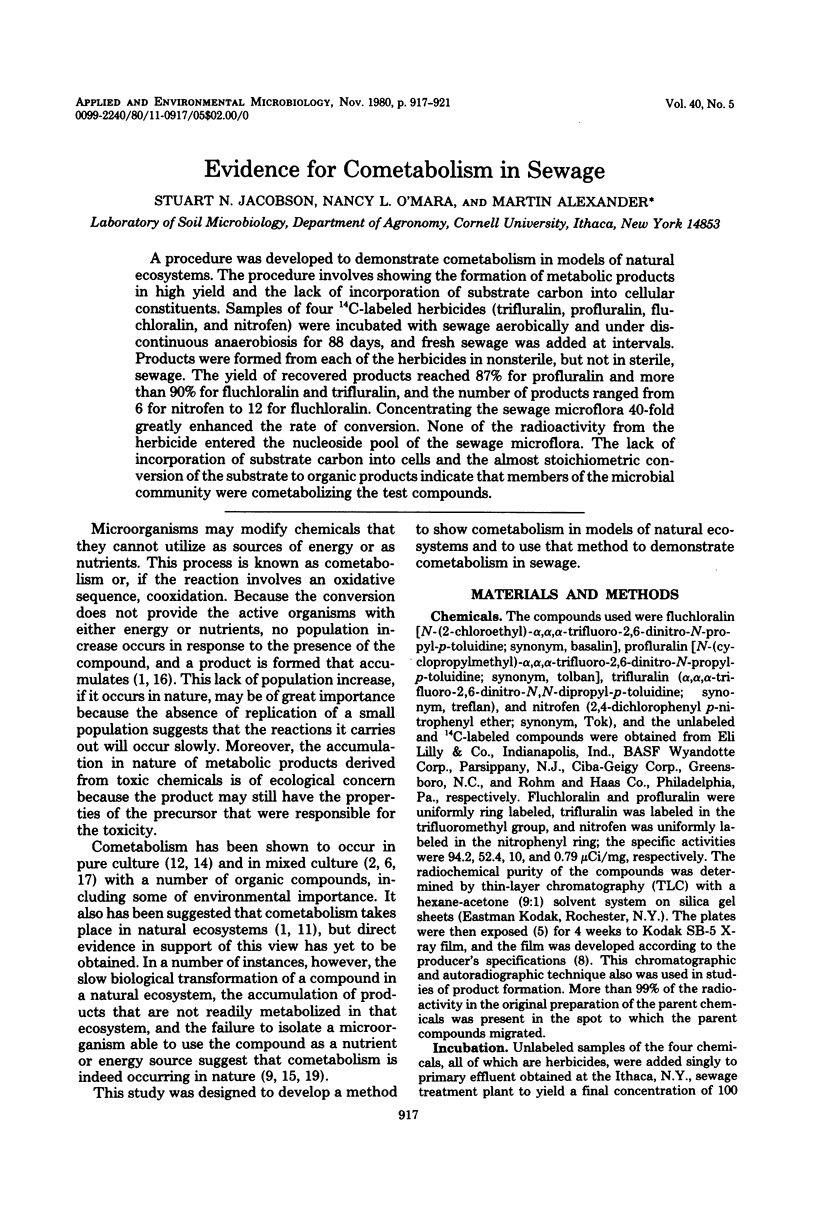
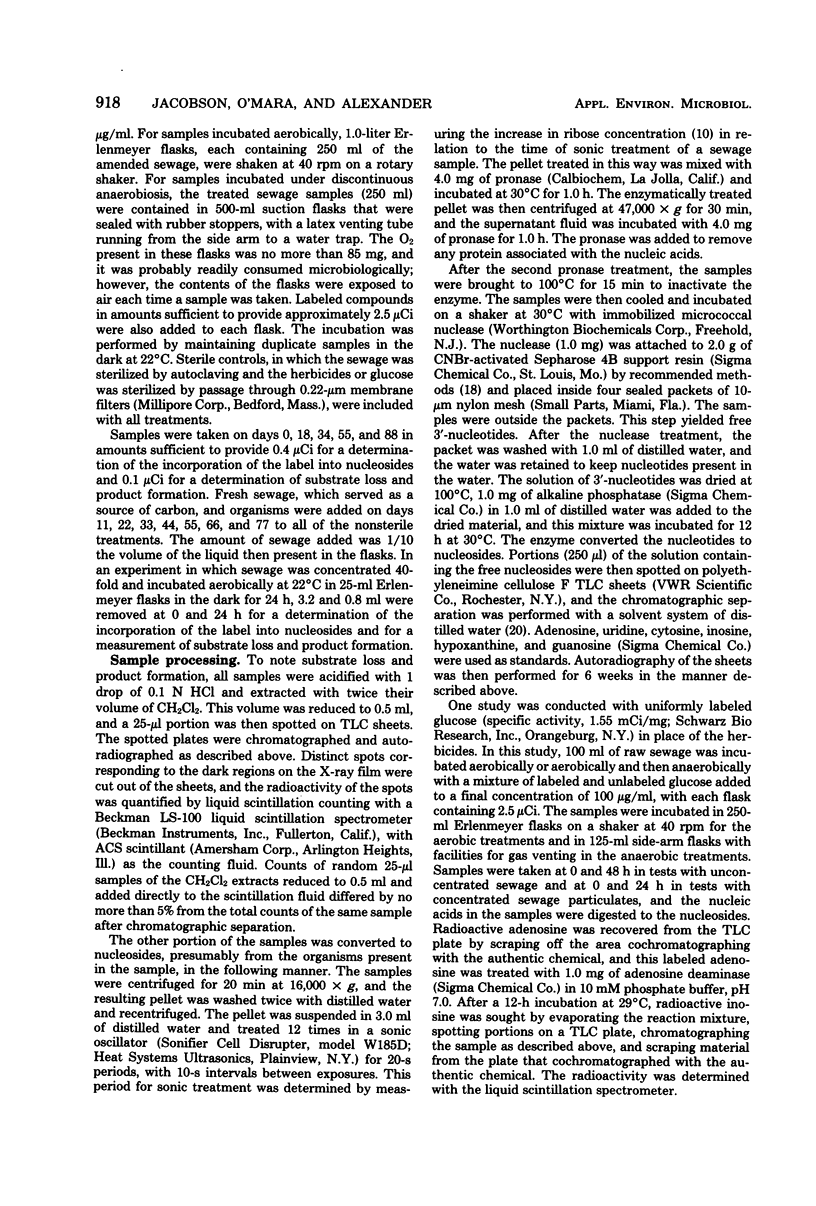
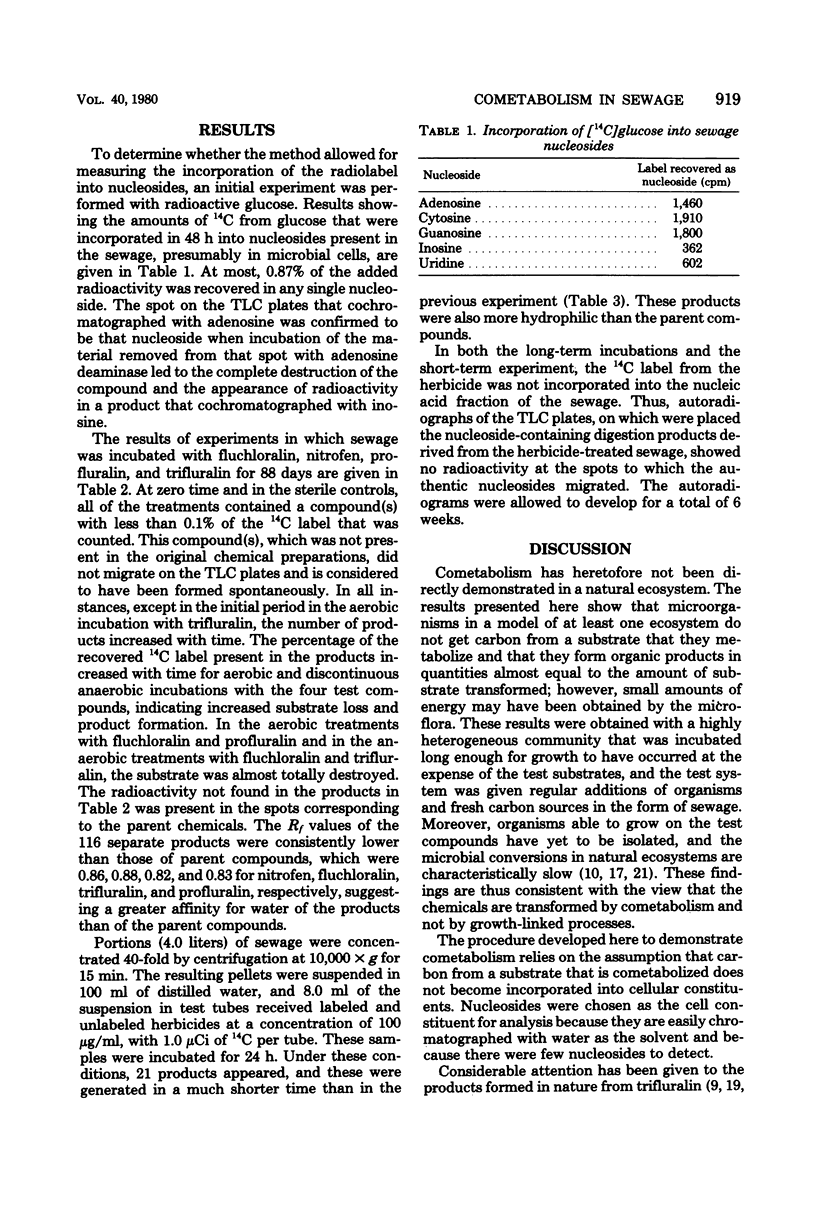
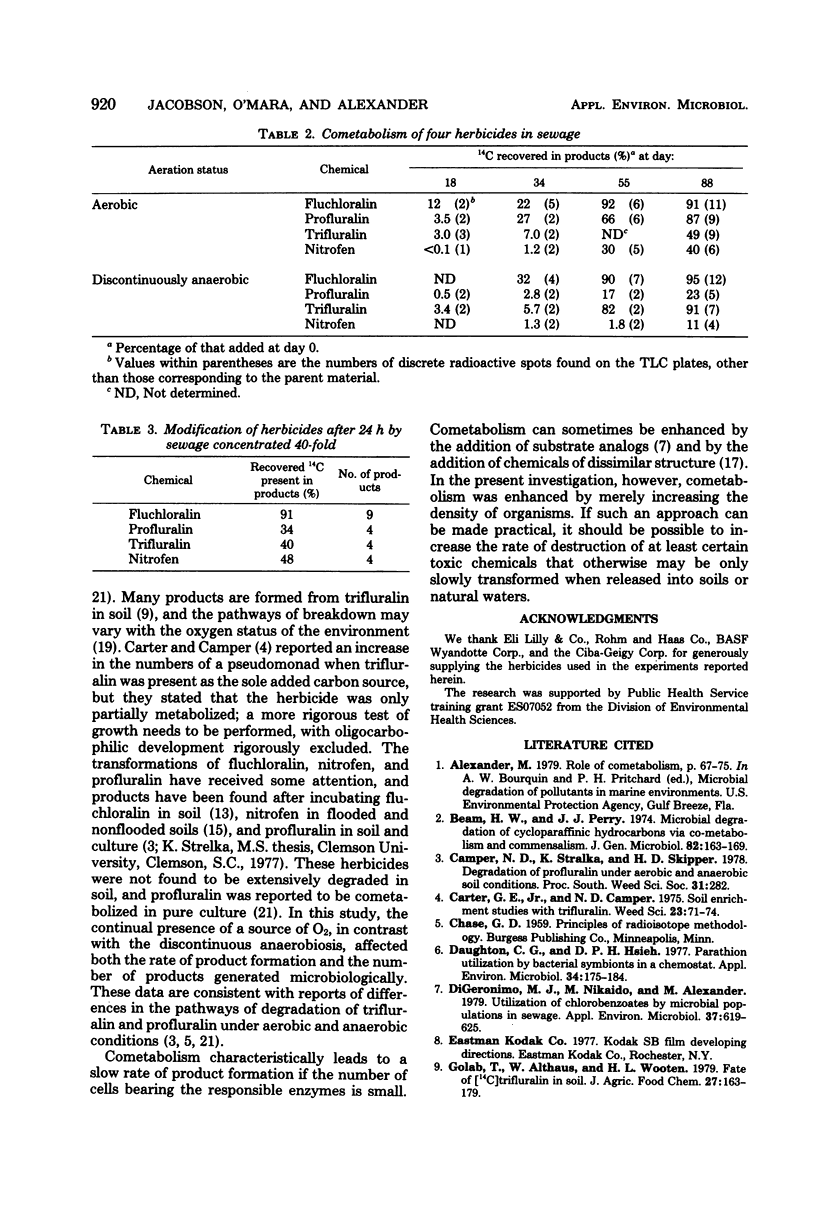
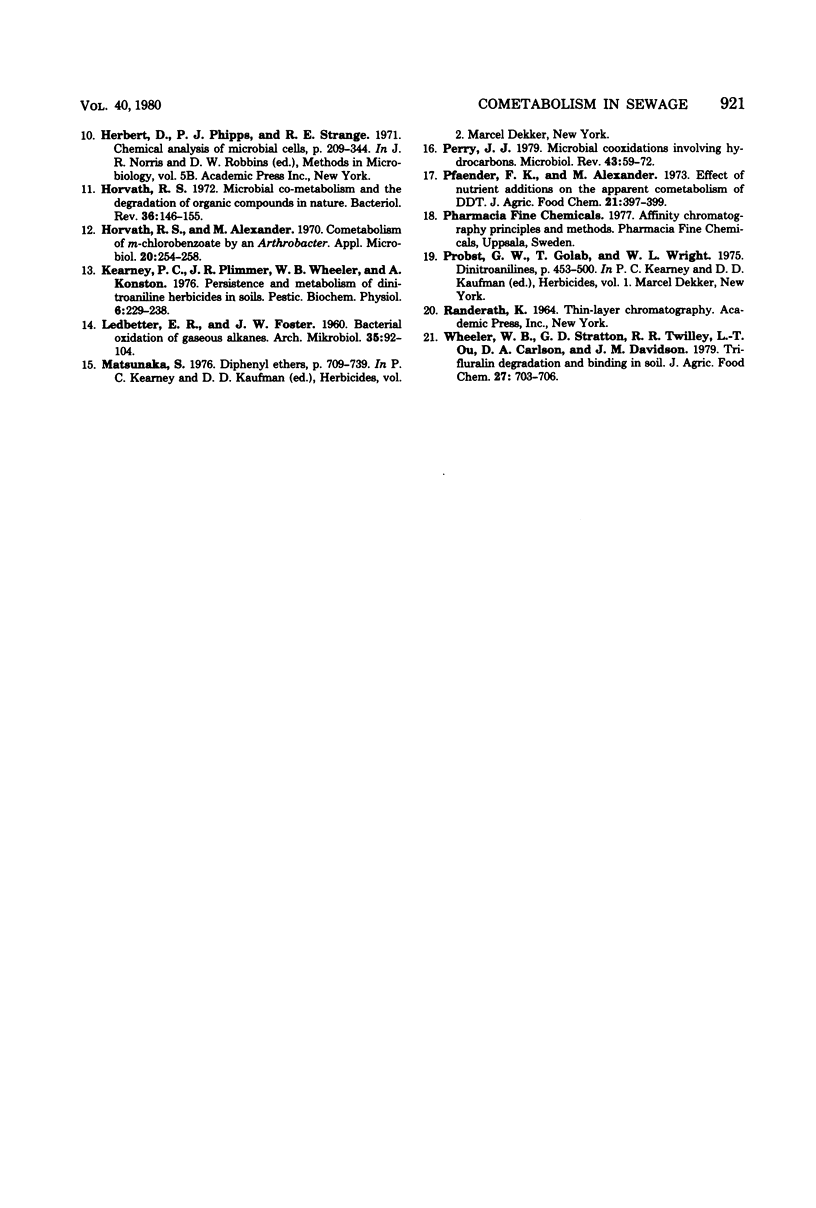
Selected References
These references are in PubMed. This may not be the complete list of references from this article.
- Daughton C. G., Hsieh D. P. Parathion utilization by bacterial symbionts in a chemostat. Appl Environ Microbiol. 1977 Aug;34(2):175–184. doi: 10.1128/aem.34.2.175-184.1977. [DOI] [PMC free article] [PubMed] [Google Scholar]
- DiGeronimo M. J., Nikaido M., Alexander M. Utilization of chlorobenzoates by microbial populations in sewage. Appl Environ Microbiol. 1979 Mar;37(3):619–625. doi: 10.1128/aem.37.3.619-625.1979. [DOI] [PMC free article] [PubMed] [Google Scholar]
- Horvath R. S., Alexander M. Cometabolism of m-chlorobenzoate by an Arthrobacter. Appl Microbiol. 1970 Aug;20(2):254–258. doi: 10.1128/am.20.2.254-258.1970. [DOI] [PMC free article] [PubMed] [Google Scholar]
- Horvath R. S. Microbial co-metabolism and the degradation of organic compounds in nature. Bacteriol Rev. 1972 Jun;36(2):146–155. doi: 10.1128/br.36.2.146-155.1972. [DOI] [PMC free article] [PubMed] [Google Scholar]
- LEADBETTER E. R., FOSTER J. W. Bacterial oxidation of gaseous alkanes. Arch Mikrobiol. 1960;35:92–104. doi: 10.1007/BF00425597. [DOI] [PubMed] [Google Scholar]
- Perry J. J. Microbial cooxidations involving hydrocarbons. Microbiol Rev. 1979 Mar;43(1):59–72. doi: 10.1128/mr.43.1.59-72.1979. [DOI] [PMC free article] [PubMed] [Google Scholar]
- Pfaender F. K., Alexander M. Effect of nutrient additions on the apparent cometabolism of DDT. J Agric Food Chem. 1973 May-Jun;21(3):397–399. doi: 10.1021/jf60187a046. [DOI] [PubMed] [Google Scholar]


